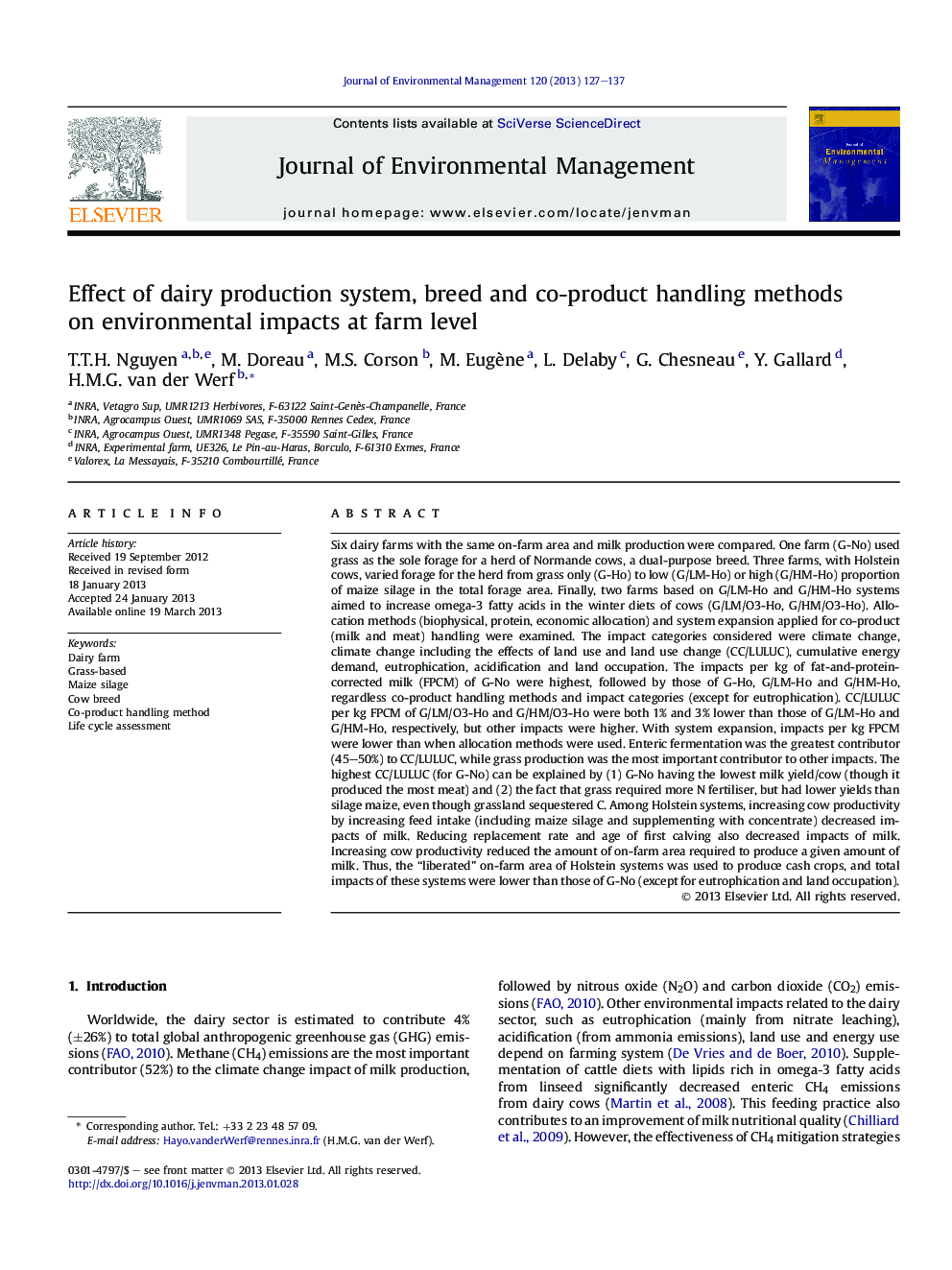| کد مقاله | کد نشریه | سال انتشار | مقاله انگلیسی | نسخه تمام متن |
|---|---|---|---|---|
| 1056060 | 1485292 | 2013 | 11 صفحه PDF | دانلود رایگان |

Six dairy farms with the same on-farm area and milk production were compared. One farm (G-No) used grass as the sole forage for a herd of Normande cows, a dual-purpose breed. Three farms, with Holstein cows, varied forage for the herd from grass only (G-Ho) to low (G/LM-Ho) or high (G/HM-Ho) proportion of maize silage in the total forage area. Finally, two farms based on G/LM-Ho and G/HM-Ho systems aimed to increase omega-3 fatty acids in the winter diets of cows (G/LM/O3-Ho, G/HM/O3-Ho). Allocation methods (biophysical, protein, economic allocation) and system expansion applied for co-product (milk and meat) handling were examined. The impact categories considered were climate change, climate change including the effects of land use and land use change (CC/LULUC), cumulative energy demand, eutrophication, acidification and land occupation. The impacts per kg of fat-and-protein-corrected milk (FPCM) of G-No were highest, followed by those of G-Ho, G/LM-Ho and G/HM-Ho, regardless co-product handling methods and impact categories (except for eutrophication). CC/LULUC per kg FPCM of G/LM/O3-Ho and G/HM/O3-Ho were both 1% and 3% lower than those of G/LM-Ho and G/HM-Ho, respectively, but other impacts were higher. With system expansion, impacts per kg FPCM were lower than when allocation methods were used. Enteric fermentation was the greatest contributor (45–50%) to CC/LULUC, while grass production was the most important contributor to other impacts. The highest CC/LULUC (for G-No) can be explained by (1) G-No having the lowest milk yield/cow (though it produced the most meat) and (2) the fact that grass required more N fertiliser, but had lower yields than silage maize, even though grassland sequestered C. Among Holstein systems, increasing cow productivity by increasing feed intake (including maize silage and supplementing with concentrate) decreased impacts of milk. Reducing replacement rate and age of first calving also decreased impacts of milk. Increasing cow productivity reduced the amount of on-farm area required to produce a given amount of milk. Thus, the “liberated” on-farm area of Holstein systems was used to produce cash crops, and total impacts of these systems were lower than those of G-No (except for eutrophication and land occupation).
► Life cycle assessments of grass- and maize-silage-based dairy farms were performed.
► Impacts per kg of milk were higher for grass-based farms than maize-based farms.
► Adding omega-3 fatty acids to rations to improve milk quality did not greatly affect the impacts studied.
Journal: Journal of Environmental Management - Volume 120, 15 May 2013, Pages 127–137